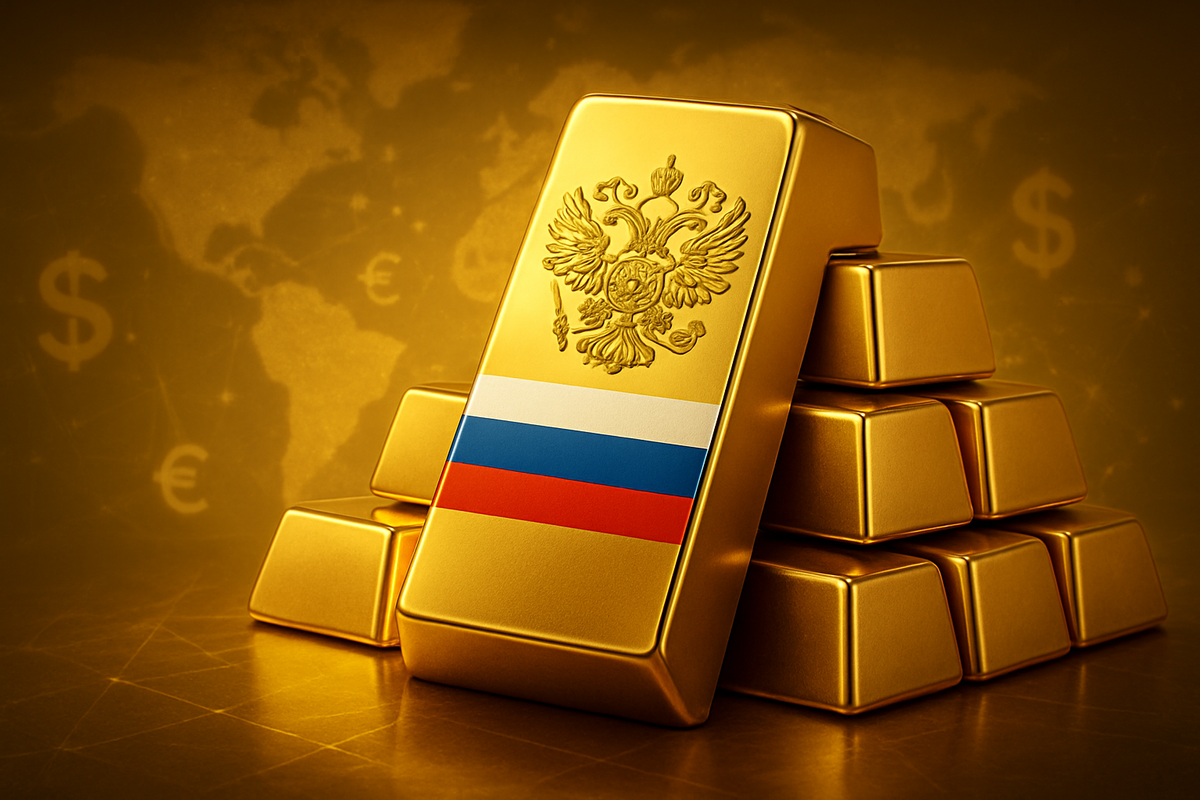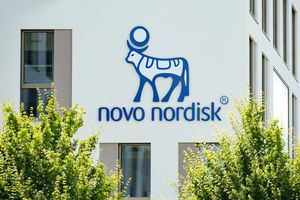
Recent reports indicate a significant expansion of Russia's central bank gold operations, a pivotal development poised to send ripple effects throughout the global gold market and the broader financial landscape. Driven by strategic objectives to enhance financial independence and mitigate geopolitical risks, Russia's aggressive pivot towards gold is creating immediate and profound implications. This move has already contributed to a substantial upward pressure on gold prices, pushing them towards the $3,000 per ounce mark in 2025, and is accelerating the global trend of de-dollarization, fundamentally altering international monetary dynamics.
The Central Bank of Russia (CBR) is not merely accumulating gold; it is executing a multi-faceted strategy aimed at bolstering financial stability and safeguarding its economy against external pressures. As of November 19, 2025, Russia's gold reserves stand at approximately 2,336 tonnes, making it the fifth-largest gold holder globally. This figure represents a 122% increase since 2014, with the CBR reportedly purchasing about 90% of newly mined domestic gold to prevent its export. This strategic retention, coupled with a surge in individual Russian citizens' gold purchases—spurred by the government's 2022 decision to scrap VAT on gold bar sales—creates a robust dual-layer approach to national and personal financial security. The timeline leading to this moment stretches back over a decade, intensifying after the 2014 annexation of Crimea and further accelerating following the 2022 invasion of Ukraine, which led to extensive Western sanctions. These sanctions solidified Russia's resolve to diversify away from Western currencies, with gold and yuan now accounting for a significant portion of its accessible reserves. Key players include the Central Bank of Russia, the Russian government, the Ministry of Finance, and domestic gold mining companies. Initial market reactions include elevated gold prices, a rally in silver (following Russia's pioneering move to include it in state reserves), and an accelerated de-dollarization trend, with gold now accounting for 20% of central bank reserves globally, compared to the dollar's approximately 46%.
Companies Poised to Win or Lose in the Golden Shift
Russia's expanded gold operations and the resulting bullish precious metals market are creating a distinct set of winners and losers among public companies. Gold and silver mining companies, encompassing producers, explorers, and royalty/streaming entities, are the primary beneficiaries, poised for significantly improved revenue streams, expanded profit margins, and robust cash flows. This favorable environment enables higher dividend payouts, substantial stock price appreciation, and enhanced capacity for strategic growth.
Senior gold producers with established operations are directly benefiting from the surge in gold prices. Companies like Newmont Corporation (NYSE: NEM), the world's largest gold producer, reported strong free cash flow in 2025, capitalizing on the high-price environment. Similarly, Barrick Gold Corporation (NYSE: GOLD, TSX: ABX), the second-largest producer, has seen its performance amplified by the historic surge. Other major players such as Agnico Eagle Mines Limited (NYSE: AEM, TSX: AEM), AngloGold Ashanti plc (NYSE: AU), Kinross Gold Corporation (NYSE: KGC, TSX: K), and Gold Fields Limited (NYSE: GFI) are also experiencing significant tailwinds. Canadian producer Alamos Gold Inc. (NYSE: AGI, TSX: AGI) reported a 110% year-on-year rise in adjusted net earnings in Q4 2024, expecting to produce between 580,000 to 630,000 ounces in 2025. Royalty and streaming companies like Franco-Nevada Corporation (TSX: FNV, NYSE: FNV), Wheaton Precious Metals Corp. (NYSE: WPM), and Royal Gold, Inc. (NASDAQ: RGLD) are also winning, as they benefit from rising gold prices without direct exposure to mining operational risks. Junior and exploration companies such as Talisker Resources (TSX: TSK) and Troilus Gold (TSX: TLG) are seeing increased investment and valuation as the market seeks new deposits.
Conversely, industries heavily reliant on precious metals as inputs face escalating material costs. Russia's explicit inclusion of silver in its state reserves, contributing to silver prices surging over 30% since early 2025, poses a challenge for sectors like solar panel manufacturing, electric vehicle (EV) production, and electronics, all of which use silver as a crucial component. These industries will likely face increased manufacturing expenses, potentially impacting product pricing and profit margins. Furthermore, the significant increase in gold prices could lead to demand destruction in the jewelry market, which accounts for approximately 40% of gold consumption. Luxury and jewelry retailers may see reduced sales as consumers react to higher prices. To mitigate these pressures, companies in affected sectors may need to implement sophisticated hedging strategies or accelerate investments in recycling initiatives.
Wider Significance: A Multipolar Financial Future
Russia's expanded gold operations are not an isolated event but a critical component of a broader, ongoing shift in the global financial landscape. This move is accelerating several key industry trends, most notably the unprecedented accumulation of gold by central banks worldwide, exceeding 1,000 tonnes annually since 2022. This institutional demand now accounts for approximately 30-35% of global gold mining output and is expected to continue, with 95% of central banks anticipating further increases in their gold reserves in 2025.
The ripple effects are profound. Russia's aggressive buying directly influences global gold prices, pushing them to record highs, with spot gold briefly touching $4,381 per troy ounce in October 2025. This benefits other gold-producing nations but also intensifies competition for global gold supply. More significantly, Russia's substantial gold reserves facilitate alternative trading relationships that bypass traditional dollar-clearing systems, fostering new economic partnerships with allies like China, India, and Turkey. For instance, bilateral precious metal trade between Russia and China surged by 80% to $1 billion in the first half of 2025. The establishment of Russia's own gold exchange in St. Petersburg by the end of 2025 further aims to fragment the global gold market, creating national price indicators independent of Western benchmarks and potentially leading to "dollar-linked" and "de-dollarized" segments.
Regulatory and policy implications are also substantial. Russia's gold strategy is a direct response to Western sanctions, utilizing gold to stabilize its economy, preserve value, and continue international trade, effectively serving as a tool to circumvent economic blockades. The US has implemented specific prohibitions on gold-related transactions involving the Central Bank of the Russian Federation. Domestically, Russia has abolished VAT on gold bar sales to individuals to counter export limitations and is drafting regulations to limit individual gold exports. Historically, Russia's current strategy echoes the post-2008 financial crisis trend where emerging economies systematically stockpiled gold, and the 1970s period of currency debasement and geopolitical stress that saw similar surges in gold prices. The freezing of Russia's dollar assets in 2022 served as a "watershed moment," demonstrating the vulnerability of fiat reserves and accelerating gold accumulation among emerging market central banks seeking alternatives. This underscores a fundamental shift towards a multipolar financial system where gold plays an increasingly central role as a neutral, sanction-proof asset.
What Comes Next: Navigating a Golden Future
In the short term (2025-2026), Russia will continue to strategically leverage its gold resources to enhance financial resilience. The CBR will remain a major purchaser of domestically produced gold, and exports will largely reroute to non-Western destinations such as China, the UAE, and Turkey. The global gold market will likely remain bullish, with analysts from J.P. Morgan Research forecasting gold to average $3,675 per ounce by Q4 2025, climbing towards $4,000 by mid-2026, which will continue to benefit Russia's substantial reserves.
Longer term (beyond 2026), Russia's gold strategy is deeply embedded in its pursuit of monetary sovereignty and de-dollarization. The systematic accumulation is seen as a mechanism to resist sanctions and influence other nations considering reserve diversification. Russia aims to solidify its position as a leading global gold producer, with forecasts predicting its mine production growth could surpass China's by 2029, and the overall Russian gold mining market projected to grow from $25 billion in 2024 to $40 billion by 2035. Strategic pivots will include continued de-dollarization, reorienting export markets, developing its domestic gold market, and investing heavily in exploration and self-sufficiency in mining equipment. Russia is also considering abolishing export duties on gold while increasing the mineral extraction tax.
Market opportunities include sustained high gold prices driven by geopolitical uncertainty and central bank demand, growing demand from non-Western economies, and the development of alternative trading infrastructure, potentially including a Russian-Chinese gold exchange. Challenges, however, remain significant. Western sanctions continue to disrupt traditional export routes and impact access to Western equipment and financing for Russian gold miners. Logistical hurdles, potential discounts on exports, supply chain vulnerabilities, and the risk of secondary sanctions for countries facilitating Russian gold exports are ongoing concerns. Despite ambitious targets, there are signs that Russia's domestic gold production might be flattening, which could hinder its goal of becoming the world's top producer. Overall, Russia's gold operations are set to continue expanding, driven by a deliberate strategy to bolster economic independence and navigate a sanctioned environment. This strategic move could lead to a more diversified global financial system, possibly with new currency mechanisms partially backed by gold, and increased stability for the ruble.
Comprehensive Wrap-up: A New Era for Gold
Russia's central bank's expanded gold operations represent a profound and multi-dimensional shift, marking a new era for gold in the global financial system. The key takeaway is Russia's strategic pivot towards gold as a cornerstone of its financial sovereignty and a potent mechanism to circumvent Western economic pressures. This dual-layered accumulation strategy, involving both the central bank and individual citizens, alongside the establishment of a new gold trading platform in St. Petersburg, underscores a deliberate move towards de-dollarization and the creation of an independent financial architecture.
Moving forward, the market is firmly in a "golden bull market." Major financial institutions are forecasting continued strong performance for gold, with prices expected to average $3,675 per ounce by Q4 2025 and potentially reach $4,000 by mid-2026. This bullish outlook is underpinned by sustained central bank demand, with 95% of surveyed central banks anticipating further increases in their gold reserves. This institutional buying is creating a "structural floor" under gold prices, providing resistance to significant declines. The emergence of a multipolar financial architecture, with competing financial systems and potentially gold-backed alternatives, will reshape global price discovery and international trade dynamics.
The lasting impact of Russia's gold strategy is its role as a crucial sanctions-resistance mechanism. The freezing of Russian central bank assets in 2022 served as a stark reminder of the vulnerability of currency holdings in sanctioning nations, accelerating diversification into gold globally. This systematic accumulation by Russia and other emerging economies signifies a permanent structural shift in global monetary architecture, moving beyond a temporary market trend. Gold's traditional role as a safe-haven asset is further reinforced by ongoing geopolitical instability, creating sustained demand for neutral monetary assets.
Investors should closely watch several factors in the coming months. Geopolitical developments, particularly in Eastern Europe, the Middle East, and the Asia-Pacific, will significantly influence gold's safe-haven appeal. Central bank policies and diversification strategies, especially from emerging markets and BRICS nations, will provide insights into future gold acquisition trends. The launch and initial performance of the St. Petersburg Gold Exchange will indicate its potential to reshape global price discovery. Additionally, U.S. Federal Reserve monetary policy and any further shifts in the silver market, given Russia's explicit inclusion of it in reserves, warrant close attention. Finally, new U.S. and EU sanctions on Russian oil companies could indirectly support gold as a strategic asset by accelerating Russia's need for alternative financial mechanisms.
This content is intended for informational purposes only and is not financial advice





